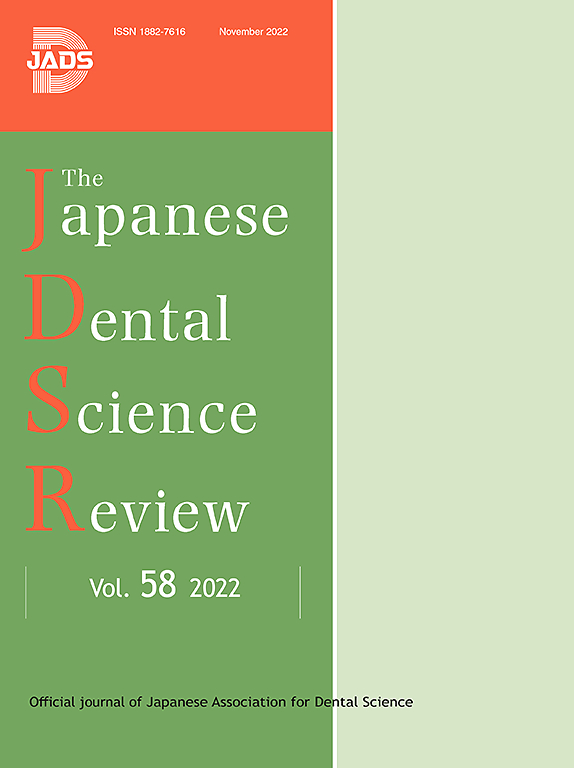Role of genetic polymorphisms in residual ridge resorption of mandible – A scoping review
IF 5.7
2区 医学
Q1 DENTISTRY, ORAL SURGERY & MEDICINE
引用次数: 0
Abstract
Residual ridge (RR) refers to the clinical alveolar ridge that remains after the bone and soft tissues have healed following tooth extraction. This ridge undergoes resorption, which is most rapid during the first six months of post-extraction. Subsequently, bone resorption continues at a slower pace throughout life, leading to significant loss of jaw structure over time. This process is commonly known as residual ridge resorption (RRR). RRR is a major factor contributing to the loss of stability and retention, especially in mandibular complete dentures. Severe resorption of the maxillary and mandibular ridges can also lead to a sunken cheek appearance, poorly fitting and unstable dentures, and associated pain and discomfort. Though the etiology of residual ridge resorption remains unclear. It is believed that certain cytokines and individual genetic variations may influence the RRR process. Thus, reviewing the studies that discuss genetic association with the health and resorption of alveolar bone may give clear view on the etiology, help to define the risk and strategize preventive and personalized management of the disease. Hence, we undertook a scoping review to understand the potential genetic factors influencing the Residual ridge resorption (RRR). This review employed PRISMA-ScR extension protocols for scoping review. The results of the study provided significant association between genetic polymorphisms, especially of single gene nucleotide polymorphisms with mandibular residual ridge resorption. Hence understanding the genetic predisposition of patients can guide the clinicians in identifying patients at higher risk of RRR, enabling preventive measures, proactive intervention and careful designing of the prothesis.
遗传多态性在下颌骨残脊吸收中的作用——综述
残牙脊(RR)是指拔牙后骨和软组织愈合后残留的临床牙槽嵴。在拔牙后的前6个月,牙脊吸收最为迅速。随后,骨吸收在整个生命过程中以较慢的速度继续,随着时间的推移导致颌骨结构的显著丧失。这个过程通常被称为残余脊吸收(RRR)。RRR是导致下颌全口义齿失稳和固位的主要因素。上颌和下颌嵴的严重吸收也会导致面颊凹陷,假牙不合适和不稳定,以及相关的疼痛和不适。尽管残脊吸收的病因尚不清楚。人们认为某些细胞因子和个体遗传变异可能影响RRR过程。因此,回顾讨论遗传与牙槽骨健康和吸收的关系的研究,可以清楚地了解病因,有助于确定风险,制定预防和个性化治疗策略。因此,我们进行了范围综述,以了解影响残脊吸收(RRR)的潜在遗传因素。本综述采用PRISMA-ScR扩展协议进行范围审查。研究结果表明遗传多态性,特别是单基因核苷酸多态性与下颌残脊吸收之间存在显著关联。因此,了解患者的遗传易感性可以指导临床医生识别RRR高危患者,采取预防措施,积极干预,精心设计假体。
本文章由计算机程序翻译,如有差异,请以英文原文为准。
求助全文
约1分钟内获得全文
求助全文
来源期刊

Japanese Dental Science Review
DENTISTRY, ORAL SURGERY & MEDICINE-
CiteScore
9.90
自引率
1.50%
发文量
31
审稿时长
32 days
期刊介绍:
The Japanese Dental Science Review is published by the Japanese Association for Dental Science aiming to introduce the modern aspects of the dental basic and clinical sciences in Japan, and to share and discuss the update information with foreign researchers and dentists for further development of dentistry. In principle, papers are written and submitted on the invitation of one of the Editors, although the Editors would be glad to receive suggestions. Proposals for review articles should be sent by the authors to one of the Editors by e-mail. All submitted papers are subject to the peer- refereeing process.
 求助内容:
求助内容: 应助结果提醒方式:
应助结果提醒方式:


